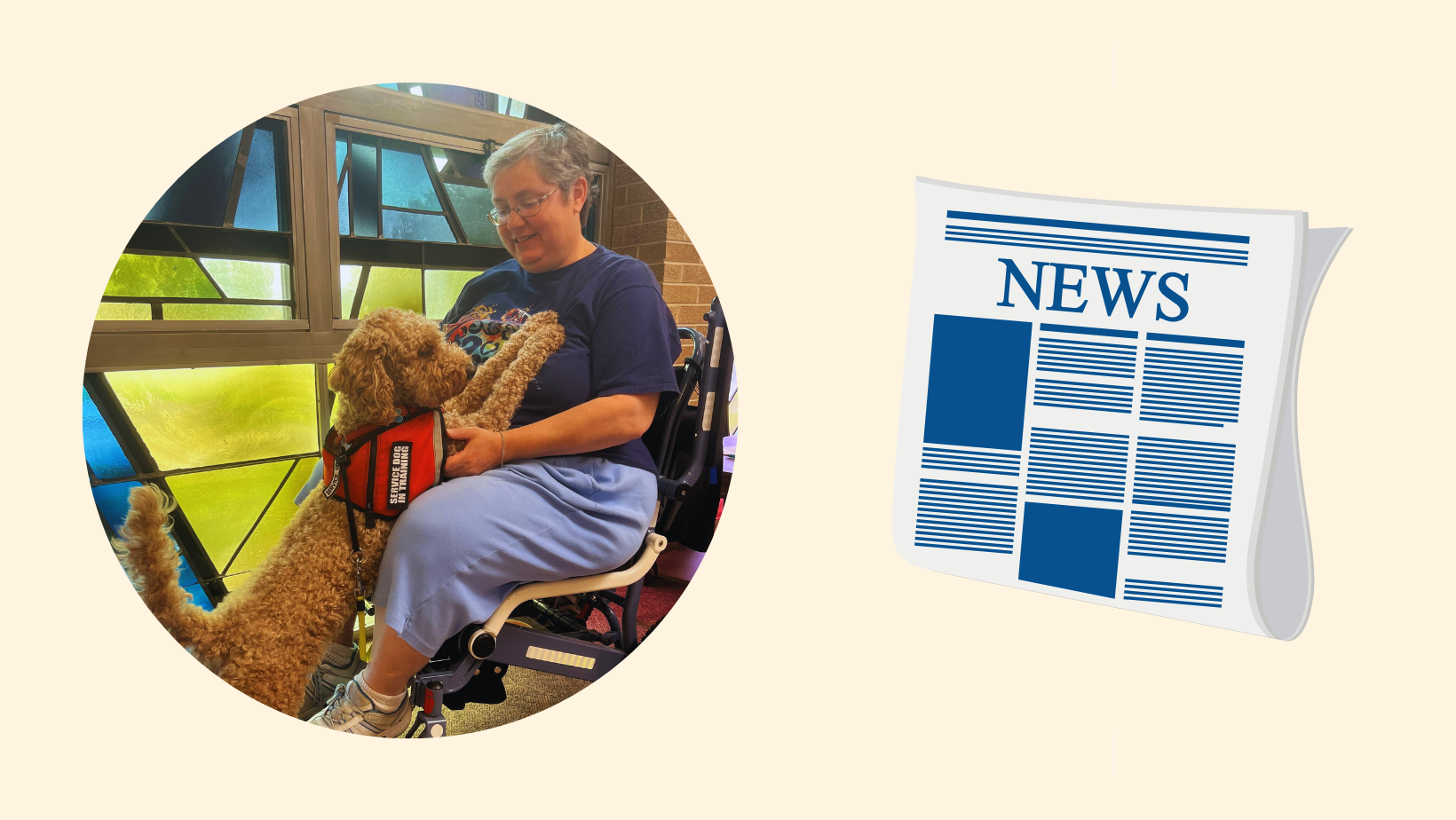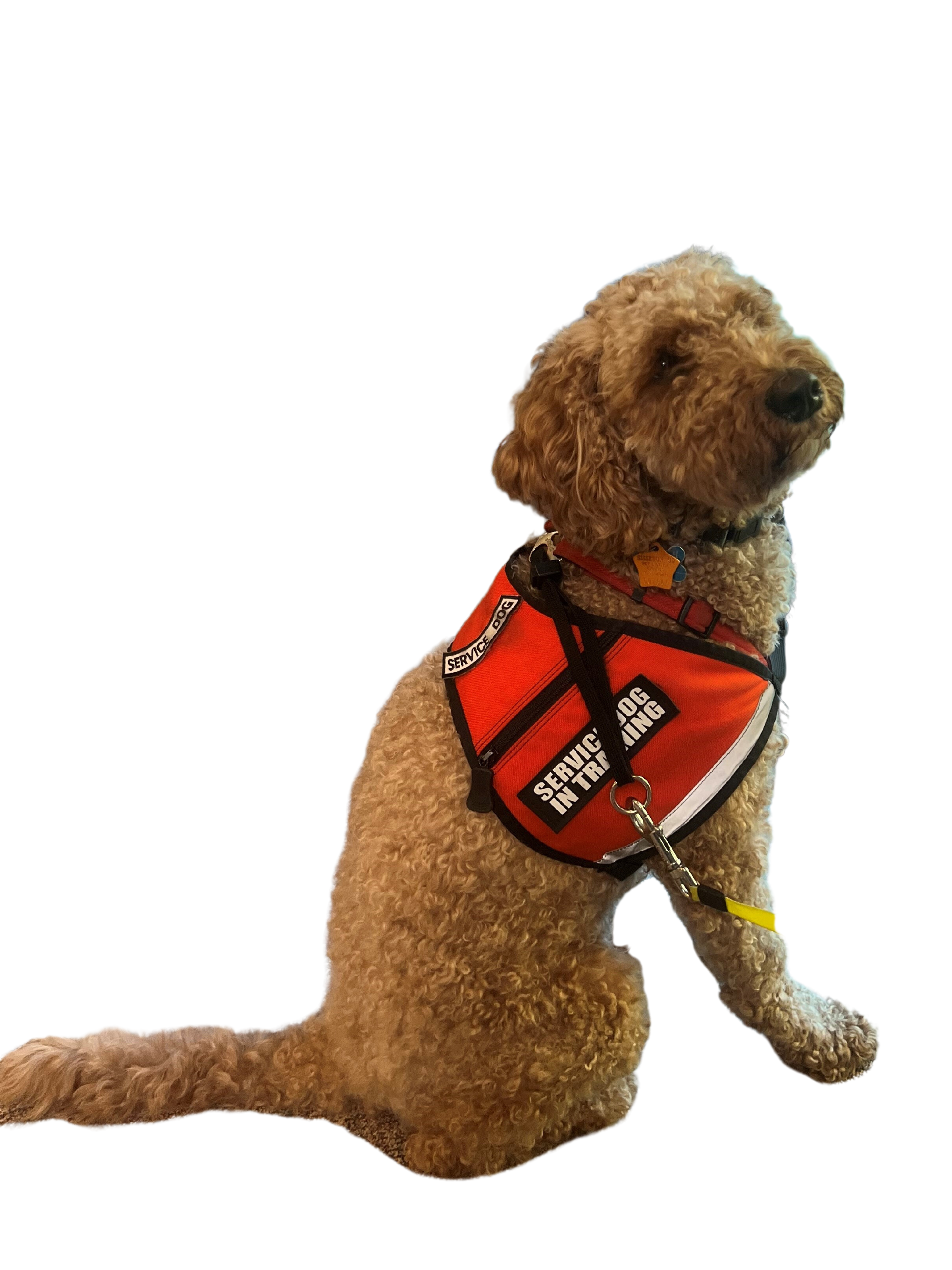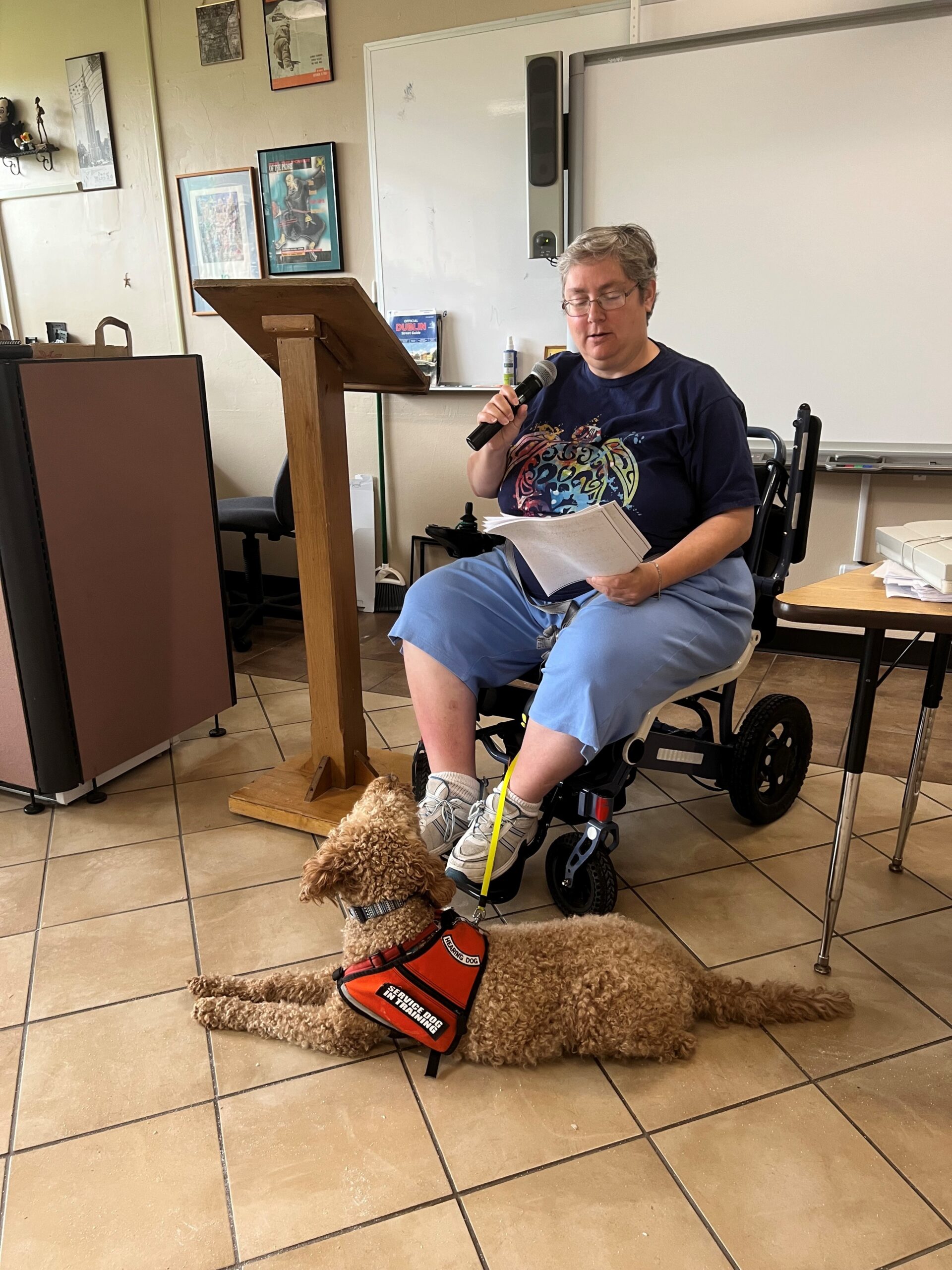
Serving Others with a Service Dog
Anytime Sister Patrice Colletti, SDS shares about her elementary class at Tiospa Zina Tribal School in Sisseton, South Dakota, her eyes light up. Clearly, educating the next generation is a ministry she’s proud of and one she would like to carry out for as long as possible. However, as an individual with more than one disability, it’s not always easy for Sr. Patrice to navigate a world designed for able-bodied people. That’s where Koda, the two-year-old service dog-in-training, comes in.

As is typical in the modern age, Koda and Sr. Patrice connected via social media. His former owner, who by the grace of God lived only three hours away from Sr. Patrice, was no longer able to continue his training due to medical needs. Koda only had the beginnings of basic training, but Sr. Patrice felt confident in her experience training service dogs. She had a hand in training her first hearing dog, Tiamo, who served by her side for 13 years.
Koda will also receive the training required of a hearing dog. Sr. Patrice is deaf and will rely on the golden doodle to signal her on specific sounds. “He will be trained to awaken me if there is a fire and lead me to the exit door,” she says. “He also will respond to tornado sirens, door knocks/bells, name calls, and police/ambulance siren sounds while I’m driving.” Koda’s training could be the difference between life or death for Sr. Patrice.
Training a service dog is no walk in the park. It’s commonly a one- to three-year process depending on the dog, trainer, handler, and the tasks the dog will do to assist the person with a disability. Organizations exist to make training easier, but they are expensive and not required if the handler is willing to commit to long-term training. Sr. Patrice says, “Training is never really completed, as the handler needs to continue to reinforce or strengthen skills throughout the dog’s working life. A ‘good’ behavior must come naturally and then continue to be enforced.” It’s important to keep in mind that service dogs have bad days too. Nobody is perfect, not even a well-trained service dog.
Some dog breeds have a history of qualities that make them best suited for lives as service dogs. Golden doodles like Koda are intelligent, eager to learn, and, most of all, friendly. In fact, “Koda” in the Dakota language means “friend” or “buddy.” Sr. Patrice says, “A friend, who is also a tribal elder, suggested the name, given Koda’s propensity for making friends of everyone he meets.” The name also honors the teaching she does on the Lake Traverse Reservation at a tribal school of the Sissetowan-Wahpetowan Oyate.
At school, Koda is best friends with the entire elementary – about 270 children plus the faculty and staff. Although he is a hearing and mobility dog, he also serves – unexpectedly – as an emotional support animal to Sr. Patrice’s classroom. His presence helps calm her students with autism, trauma, and behavioral and learning disorders. “He knows how to be ‘silly’ and make us laugh. The students have helped me with training, which has helped them learn patience, problem-solving, and communication skills. With the full support of my principal, Koda has made a real difference from kindergarten through grade five,” says Sr. Patrice. The students learn from Koda, and he learns from them.
When the golden doodle dons his service dog vest, he is transformed into a powerful advocate for disability rights. Koda’s behavior and training reflects upon Sr. Patrice and the whole community of service dogs and their handlers. She explains that people often incorrectly view service dogs as pets or emotional support animals. “The rise of ‘fake service dogs’ makes it difficult for people with disabilities who benefit from ‘real’ service dogs for activities at work, school, and in the general public.”

As Salvatorian Sisters, we are called to share about our loving God “… by whatever means the Spirit of God inspires.” In Sr. Patrice’s case, Koda is one of the means she uses to further connect with the people she serves. “His innate ability to include all in his circle of wagging is a witness to inclusion and acceptance that is so very needed in our world today,” says Sr. Patrice. “God has gifted me with so many amazing abilities, and working with a service dog makes it possible for me to effectively live our SDS mission. Even though Koda is not yet fully trained, he is already helping me do my ministry as an educator and live fully and vibrantly in my SDS community as well as in society at large.”
How to be a Service Dog
Disclaimer: this is by no means a complete list of the training a service dog requires. This is a basic explanation of the training Koda will receive in Sr. Patrice’s care.
1. Master the basics of obedience: stay, sit, walk on a loose leash, and resist the temptation of going after rabbits and squirrels.
2. Master public access manners: work calmly in crowds, busy retail stores, and elevators full of people. A service dog needs to work in all types of situations the handler might encounter – traveling, working, going to school, and being active in their community.
2½. Pass the American Kennel Club’s Canine Good Citizenship test. It’s not specific or required of service dogs, but it is a good evaluation of a dog’s abilities.
3. Master task-specific training according to the needs and abilities of the handler.
4. Undergo constant and intense socialization training. Service dogs need to be comfortable with a wide variety of people, places, and situations.
